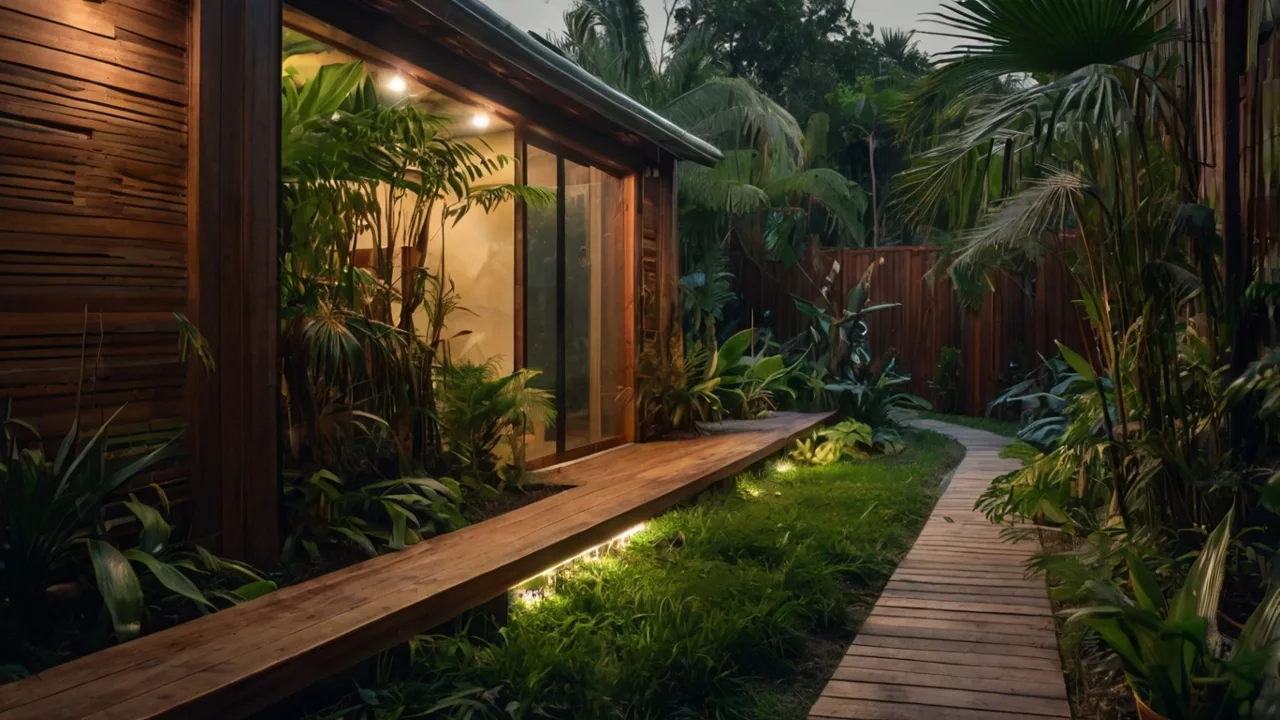Let’s talk about the most overlooked space in your entire property—that narrow strip of land between your house and fence that currently serves as nothing more than a utility corridor for trash cans and forgotten garden tools. You walk past it dozens of times each week, but when was the last time you actually considered its potential to become something beautiful?
Here’s what most homeowners don’t realize: your side yard represents one of the highest-impact design opportunities on your entire property. It’s a space you interact with daily—every time you come and go from your home—yet it’s probably doing absolutely nothing to enhance your daily experience or your property’s overall aesthetic appeal.
The side yards that truly captivate aren’t afterthoughts or leftover spaces. They’re thoughtfully designed pathways that create anticipation as you approach your home, provide peaceful transitions between public and private spaces, and turn necessary foot traffic into pleasant journeys through carefully curated garden experiences.
Whether your side yard is a narrow urban corridor or a more generous suburban passage, the right pathway design can transform this utilitarian space into a highlight of your property. From modern minimalist approaches that emphasize clean lines and sophisticated materials to whimsical cottage gardens that create magical walking experiences, your side yard pathway can become a signature element that sets your home apart from every other house on the block.
Ready to discover how a thoughtfully designed pathway can turn your most neglected outdoor space into your property’s most charming feature?
Understanding Side Yard Design Challenges
Before exploring specific design solutions, it’s crucial to understand the unique constraints and opportunities that side yards present. These spaces have distinct characteristics that require different approaches than front yards, backyards, or traditional garden areas.
Scale and Proportion Considerations – Most side yards are defined by their narrow width and linear nature, creating corridor-like spaces that can feel cramped or uninviting without proper design intervention. Successful side yard pathways use this linear quality as an asset, creating journey-like experiences that unfold progressively rather than fighting against the natural proportions.
Privacy and Intimacy Opportunities – Side yards often feel more private than front yards while being more accessible than backyards, creating unique opportunities for intimate garden experiences. This semi-private quality allows for more personal design expressions and experimental plantings that might feel too bold in more visible locations.
Functional Requirements Integration – Unlike purely decorative garden spaces, side yards must accommodate practical needs like utility access, storage, and daily foot traffic. The most successful designs seamlessly integrate these functional requirements into beautiful environments rather than treating them as necessary evils to hide or minimize.
Microclimate Advantages – The protected nature of most side yards creates unique growing conditions that can support plants that might struggle in more exposed locations. Understanding and leveraging these microclimate benefits allows for more diverse and interesting plant selections that enhance the pathway experience.
Creating Journey-Based Design Experiences
The most memorable side yard pathways understand that linear spaces are perfect for creating narrative experiences—journeys that unfold progressively as you move through the space rather than revealing everything at once like traditional garden views.
Sequential Reveal Strategy – Design your pathway to offer changing views and experiences at different points along the route. A curve that reveals a sculpture, a gate that frames a vista, or plantings that shift in character as you progress all create engaging experiences that make even short walks feel like discoveries.
Sensory Layering Throughout Movement – As people move along pathways, they experience different sensory elements at walking pace rather than static viewing. Plan for fragrant plants at nose height, textural elements that invite touch, and sound elements like rustling grasses or water features that enhance the walking experience.
Destination and Rest Point Creation – Even narrow side yards can benefit from moments of pause or visual destinations. A widening in the path with seating, a special plant grouping, or an art piece provides psychological rest stops that make longer pathways feel more comfortable and purposeful.
Lighting for Extended Use – Side yard pathways often serve as primary routes to and from homes, making lighting essential for safety and beauty during evening hours. Layer different lighting types—path lighting for safety, accent lighting for drama, and ambient lighting for comfort—to create pathways that work beautifully both day and night.
Balancing Beauty with Practicality
The most successful side yard pathways achieve the delicate balance between aesthetic appeal and practical functionality. These spaces must work for daily use while creating beautiful experiences that enhance rather than complicate your routine.
Surface Selection Strategy – Choose pathway materials that support both beauty and function. Surfaces must be safe for daily walking, weather-appropriate for your climate, and maintainable within your lifestyle while contributing to the overall design aesthetic you want to achieve.
Plant Selection for Success – Side yard plantings need to thrive in specific microclimates while requiring minimal maintenance and staying within appropriate scale. The best plant choices provide year-round interest, support the pathway’s design theme, and improve rather than complicate the walking experience.
Storage and Utility Integration – Rather than trying to hide necessary elements like garbage cans, utility meters, or garden tools, incorporate them thoughtfully into the overall design. Beautiful screening solutions, integrated storage, and creative placement can make practical elements contribute to rather than detract from the pathway’s appeal.
Maintenance Access Planning – Ensure your beautiful pathway design allows for necessary maintenance activities like cleaning gutters, accessing utilities, or seasonal garden care. The most sustainable designs anticipate these needs and provide solutions that don’t compromise the aesthetic vision.
12 Side Yard Pathway Ideas That Redefine Outdoor Elegance
Modern Zen Gravel Path with Minimalist Lighting
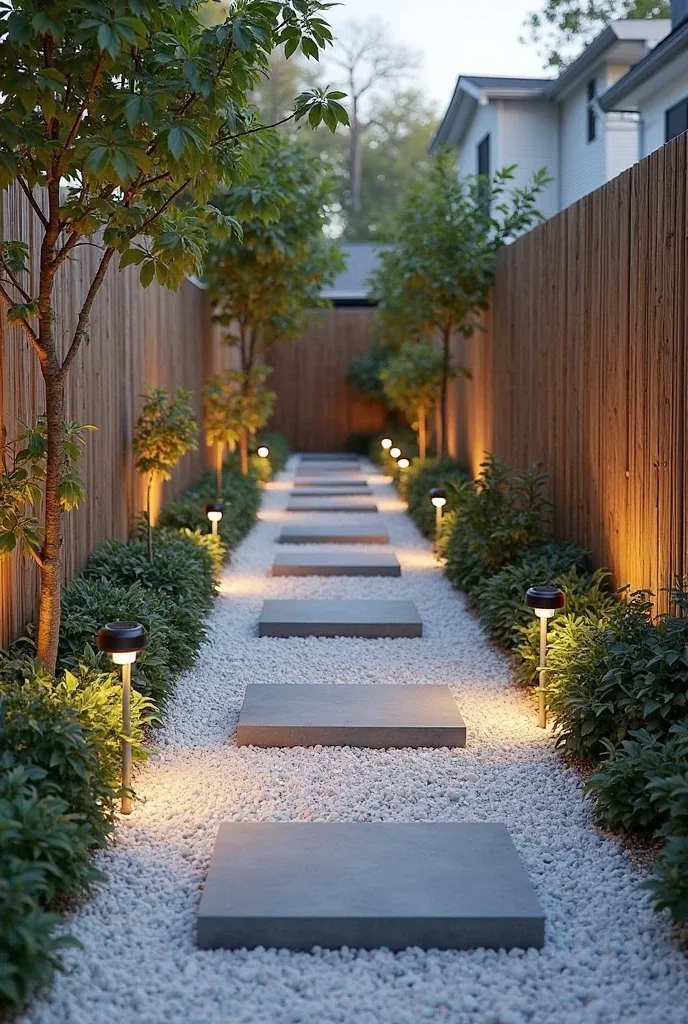
Clean lines and serene materials create side yard pathways that feel like meditation walks rather than utilitarian corridors. Smooth white gravel provides excellent drainage while creating a sophisticated surface that complements contemporary architecture and minimalist landscape philosophies.
Large rectangular concrete stepping stones break up the gravel expanse while providing stable walking surfaces that work in all weather conditions. The geometric precision of the stones creates visual rhythm while the neutral materials ensure the pathway feels timeless rather than trendy. Minimalist solar lights along the edges provide evening illumination without visual clutter.
This approach works particularly well for homeowners who appreciate Japanese design principles or contemporary minimalism. The zen aesthetic creates daily moments of calm while requiring minimal maintenance and providing excellent functionality for year-round use.
Whimsical Cottage Path with Flower Borders
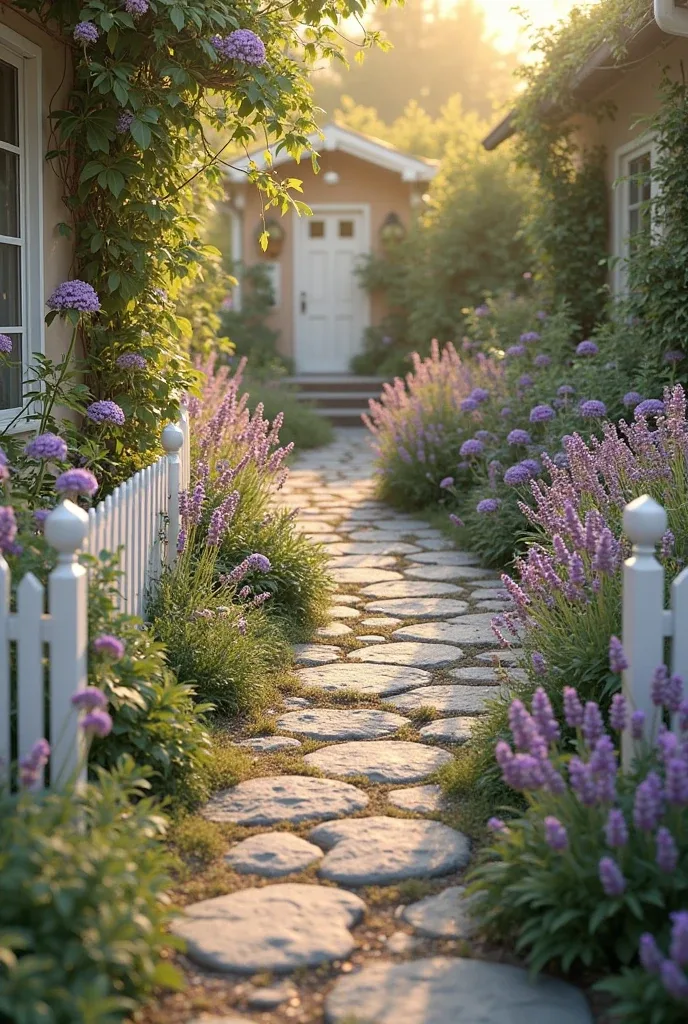
Transform narrow side yards into magical garden experiences through curved pathways lined with abundant flowering plants that create cottage garden charm. Stone walkways with organic, meandering layouts feel more like garden strolls than direct routes, encouraging slower movement and garden appreciation.
Wildflowers, lavender, and other cottage garden favorites spill over pathway edges, creating informal borders that soften hard surfaces while providing seasonal color and fragrance. White picket fencing adds to the cottage aesthetic while providing structure for climbing plants and boundary definition.
The cottage approach appeals to homeowners who want their daily routines to feel more connected to nature and seasonal changes. This style works particularly well in traditional neighborhoods or for those who enjoy active gardening and seasonal maintenance.
Slim Urban Path with Vertical Garden Wall
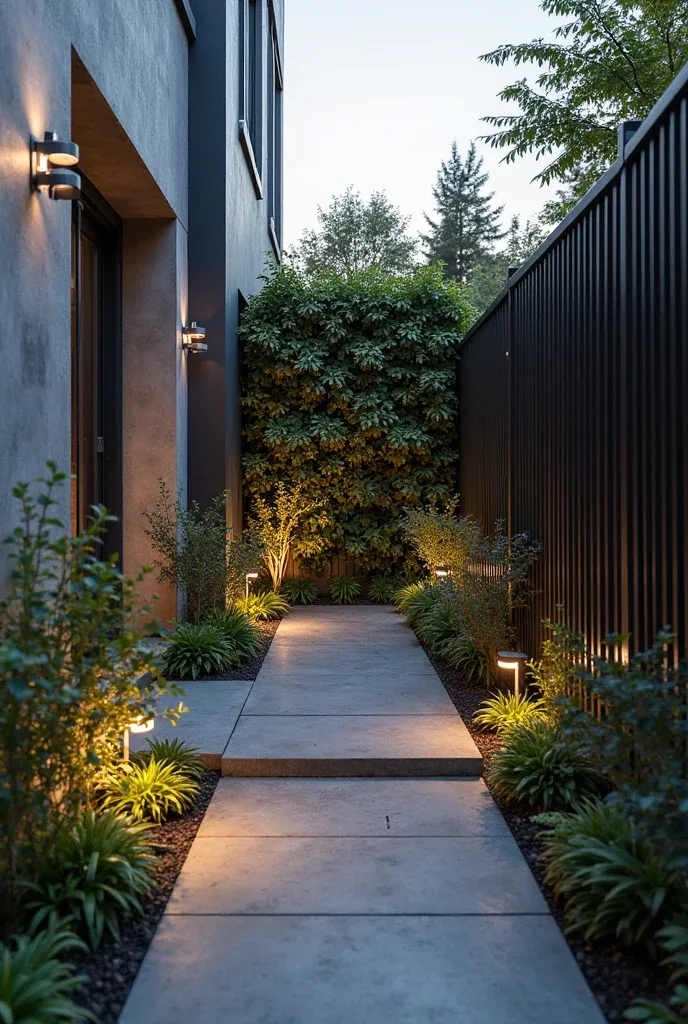
Maximize limited space through vertical garden solutions that create lush environments within narrow confines. Sleek slate tiles provide sophisticated walking surfaces while vertical gardens transform blank walls into living art installations that improve air quality and provide privacy.
Wall-mounted lighting eliminates the need for pathway lighting that would consume precious floor space while creating dramatic uplighting effects that emphasize the vertical plantings. Matte black fencing provides contemporary contrast while supporting the overall urban aesthetic.
This design strategy works excellently for urban properties where space is premium and privacy is important. The vertical approach creates surprising garden abundance within minimal square footage while maintaining sophisticated urban aesthetics.
Rustic Brick Path with Climbing Vines
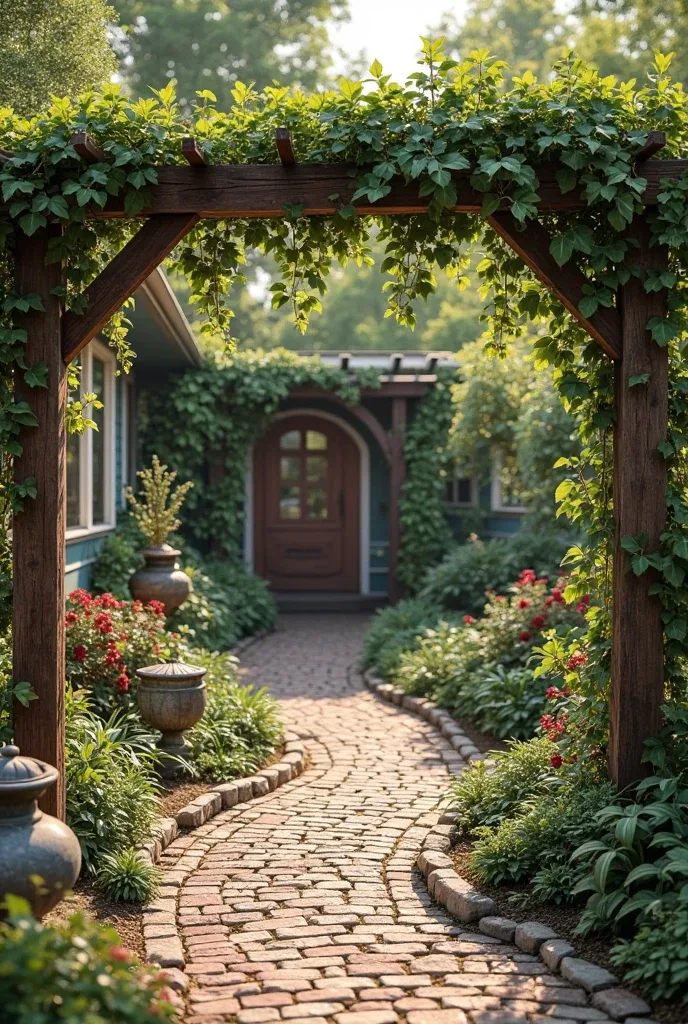
Weathered materials and informal plantings create side yard pathways that feel like established garden features rather than new additions. Red brick pathways develop character over time while providing durable surfaces that complement traditional architectural styles.
Wooden trellises support climbing vines that create overhead canopies, transforming utilitarian corridors into tunnel-like garden experiences. The overhead greenery provides shade, privacy, and seasonal interest while aged stone edging adds authentic character.
The rustic approach appeals to homeowners who prefer gardens that feel established and naturally evolved rather than formally designed. This style requires patience as plantings mature but creates increasingly beautiful results over time.
Tropical Vibe with Palm Leaves and Wood Steps
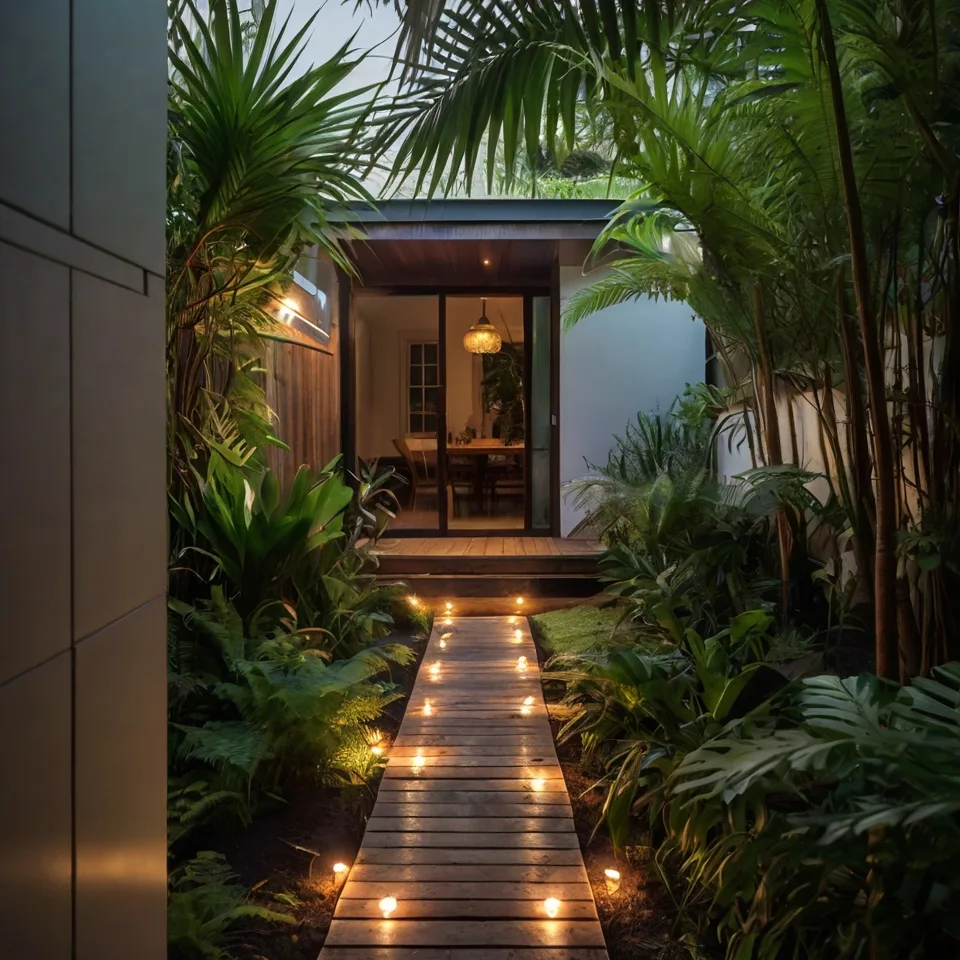
Bring exotic resort feelings to side yard spaces through tropical plantings and natural materials that create vacation-like experiences in everyday settings. Wooden plank stepping paths feel organic and natural while providing stable walking surfaces that age beautifully.
Large palm leaves and tropical ferns create lush borders that transform narrow spaces into jungle-like corridors. String lighting adds evening ambiance while emphasizing the exotic plantings and creating magical nighttime experiences.
This approach works well for homeowners in appropriate climates or those willing to maintain tropical plants as seasonal features. The tropical aesthetic creates daily escapes from routine while adding distinctive character to standard suburban settings.
Pebble Mosaic Path with Mediterranean Flair
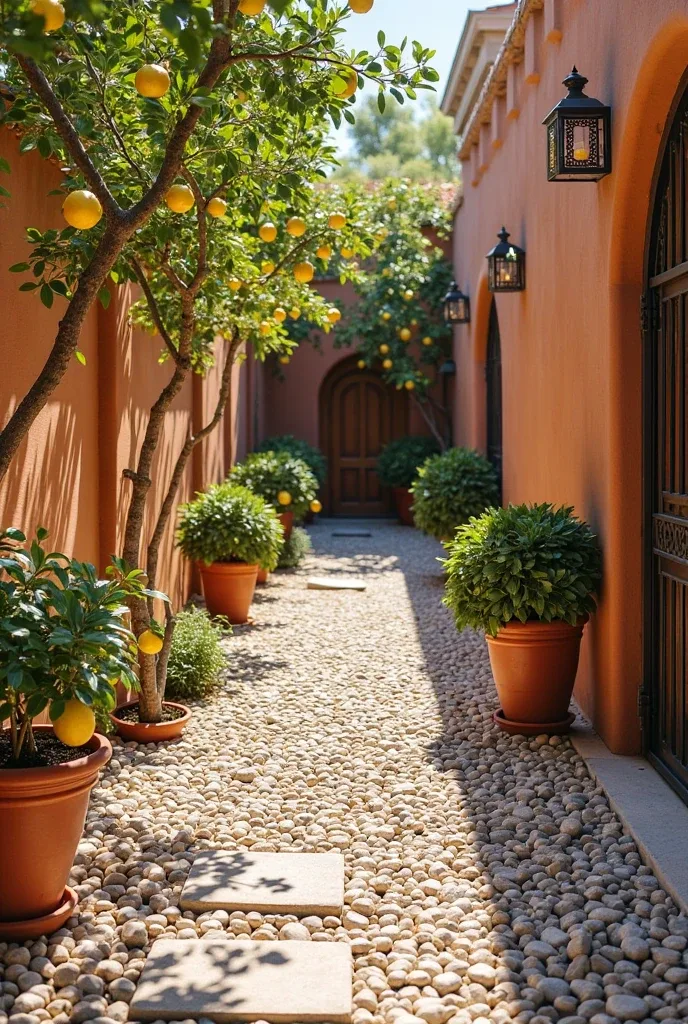
Handcrafted pebble mosaics transform functional pathways into artistic expressions that celebrate traditional Mediterranean garden craft. These intricate stone patterns create walking surfaces that are both beautiful and practical while adding significant visual interest to narrow spaces.
Terracotta walls, potted citrus trees, and wrought iron accents complete the Mediterranean aesthetic while providing functional elements like privacy screening and seasonal fragrance. The warm, sunny palette works particularly well in climates that support Mediterranean-style gardening.
The mosaic approach appeals to homeowners who appreciate handcrafted details and cultural design references. While more labor-intensive initially, pebble mosaics create permanent artwork that becomes more beautiful with age and weather.
Black Slate Path with LED Edge Lighting
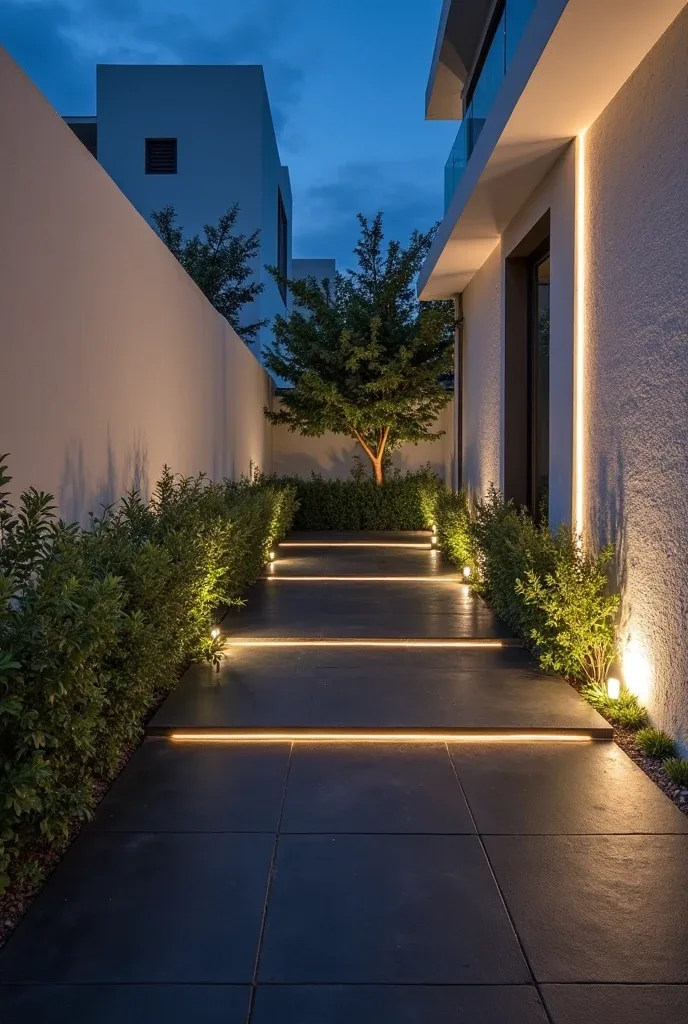
Contemporary materials and sophisticated lighting create side yard pathways that feel like extensions of luxury interior spaces. Black slate tiles provide sleek walking surfaces while LED strip lighting emphasizes the pathway edges and creates dramatic evening effects.
White stucco walls and minimal plantings maintain the clean, contemporary aesthetic while strategic lighting placement creates striking shadow patterns. The monochromatic palette feels sophisticated and timeless while working with various architectural styles.
This modern approach works well for homeowners who prefer contemporary design and minimal maintenance requirements. The sophisticated materials and lighting create impressive results while remaining practical for daily use and long-term durability.
Grass and Stone Checkerboard Path
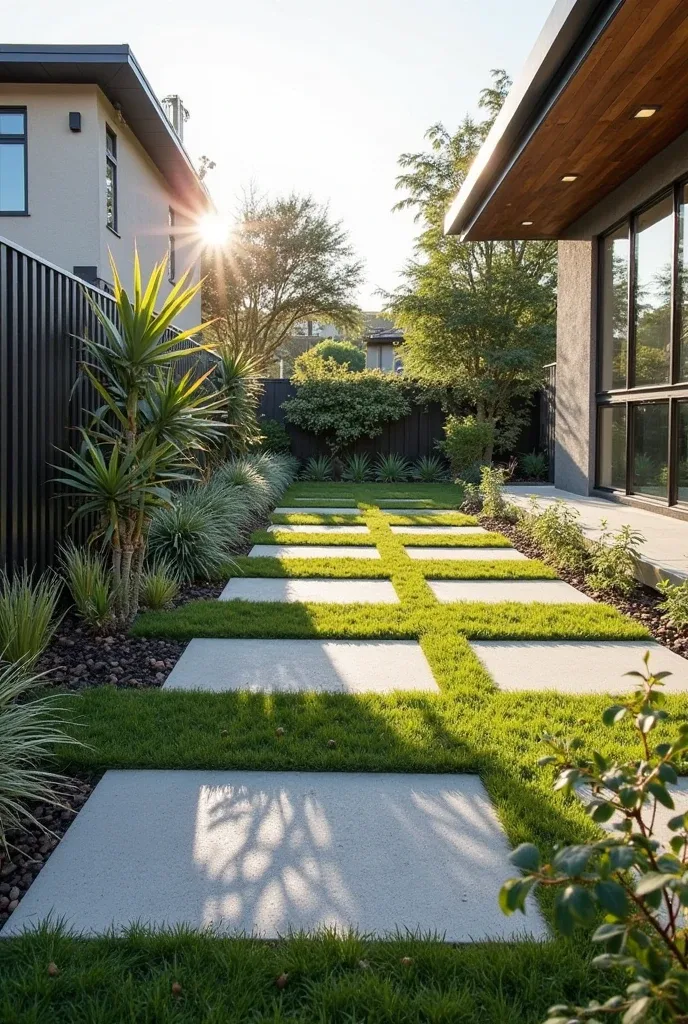
Geometric patterns create visual interest while maintaining practical functionality through alternating grass and concrete squares. This approach provides the softness of lawn areas with the durability of stone surfaces, creating pathways that work well in various weather conditions.
The checkerboard pattern adds playful geometry while crisp modern fencing provides structural boundaries. Subtle lighting emphasizes the pattern while providing necessary evening illumination for safe navigation.
This design strategy appeals to homeowners who want contemporary style with organic elements. The grass and stone combination requires more maintenance than hard surfaces alone but creates unique visual appeal that sets properties apart.
Wabi-Sabi Inspired Asymmetric Stone Path
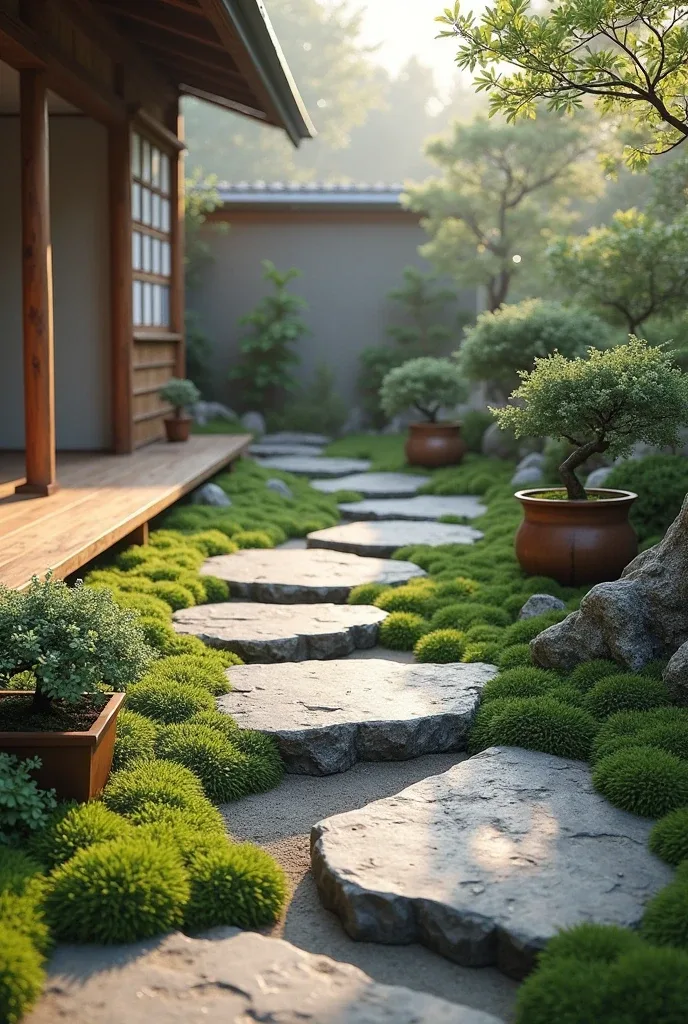
Embrace imperfection and natural beauty through irregular stone pathways that celebrate organic forms and weathered materials. Natural stone pieces in various sizes create informal walking surfaces that feel like discovered trails rather than constructed paths.
Moss, bonsai trees, and other elements of Japanese garden design complete the wabi-sabi aesthetic while emphasizing the beauty of natural aging and imperfection. Raw wood elements add warmth while maintaining the authentic, unforced feeling.
The wabi-sabi approach appeals to homeowners who prefer natural beauty over formal perfection. This style requires minimal maintenance while creating increasingly beautiful results as materials weather and plantings mature naturally.
Sculptural Desert-Inspired Side Yard Path
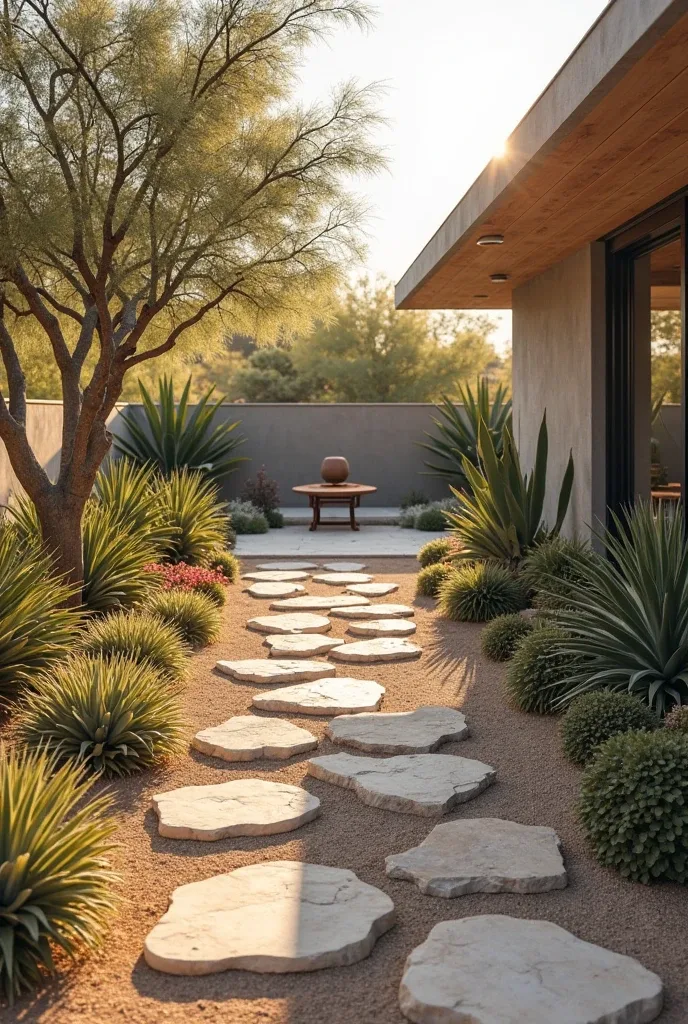
Transform side yards into sculptural landscapes through artistic stone pavers and desert plantings that require minimal water while providing maximum visual impact. Abstract stone shapes create artistic walking surfaces while desert plants like agave and succulents provide structural beauty.
Fine sand bases and sculptural elements create gallery-like experiences within utilitarian spaces. The minimal water requirements make this approach sustainable in dry climates while the artistic elements provide year-round visual interest.
This desert approach works well for homeowners in appropriate climates or those seeking low-maintenance alternatives to traditional gardens. The sculptural quality creates distinctive character while requiring minimal ongoing care.
Fairy Light Tunnel Path with Arched Vines
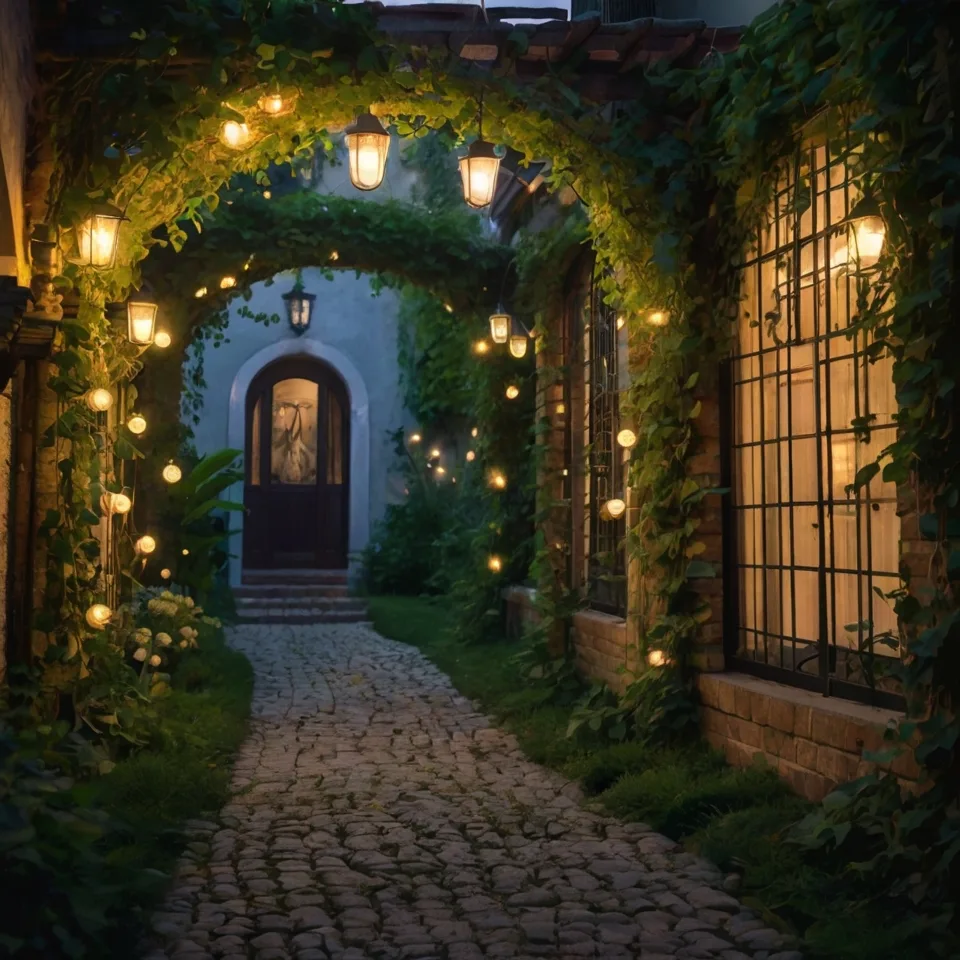
Create magical tunnel experiences through arched trellises covered in climbing vines and fairy lights. Cobblestone pathways add traditional charm while overhead canopies transform ordinary corridors into enchanted garden passages.
The tunnel effect provides privacy and shade while fairy lights create magical evening experiences that make daily routines feel special. Various climbing plants can provide seasonal changes while maintaining the overall tunnel structure.
This whimsical approach appeals to homeowners who want their gardens to feel magical and distinctive. While requiring more maintenance for plant care, the results create unique experiences that neighbors and visitors will remember.
Minimalist Monochrome Side Garden Walkway
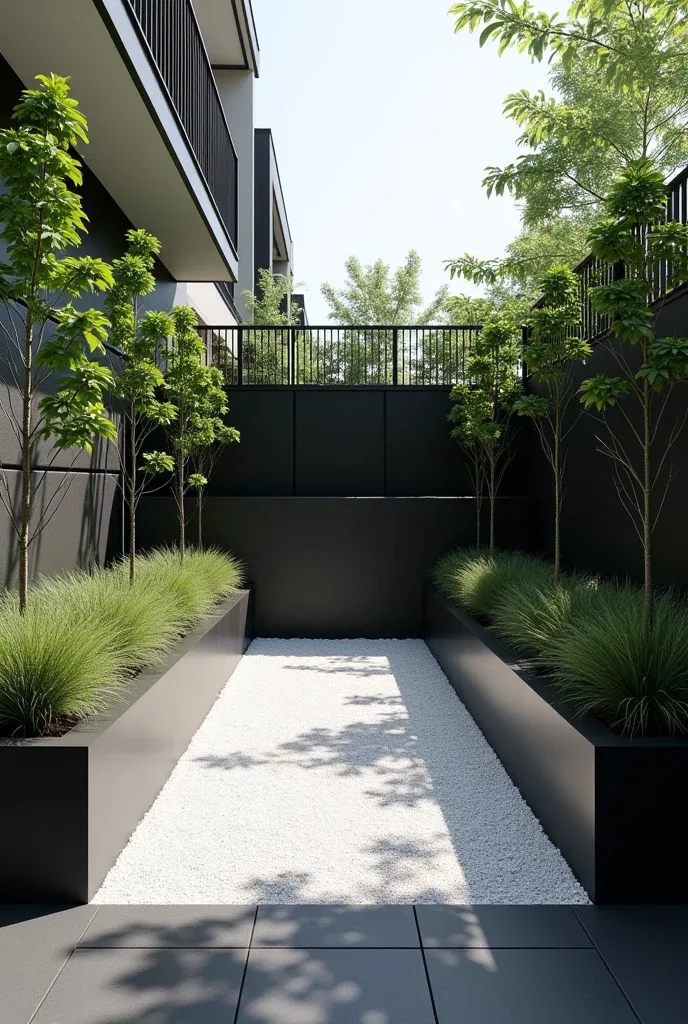
Sophisticated monochrome palettes create side yard pathways that feel like extensions of contemporary interior design. Matte black pavers over white gravel create striking contrast while narrow planters with architectural plants maintain the clean, minimal aesthetic.
Clean lines, harsh shadows, and carefully edited plant selections emphasize the architectural quality of the design. The monochrome approach feels sophisticated and timeless while requiring minimal maintenance and providing excellent functionality.
This minimalist strategy works well for homeowners who prefer contemporary design and low-maintenance landscapes. The sophisticated materials and restrained palette create impressive results while remaining practical for daily use and long-term enjoyment.
Final Thoughts
The most successful side yard pathways enhance your daily experience while adding distinctive character to your property. These aren’t just functional routes—they’re opportunities to create beautiful transitions that make coming and going from home feel more intentional and pleasant.
Choose design approaches that align with your maintenance preferences, climate conditions, and architectural style while reflecting your personal aesthetic preferences. The best side yard pathway will feel authentic to your property and lifestyle rather than trying to replicate someone else’s design vision.
Remember that side yard pathways are long-term investments in your property’s beauty and functionality. Focus on quality materials and sustainable plant choices that will improve with age rather than require constant replacement or intensive maintenance.
Start with one element that excites you most—whether it’s beautiful stone work, lush plantings, or sophisticated lighting—and build your pathway design around that inspiration. The goal is creating a space that makes you smile every time you walk past, transforming a forgotten corner of your property into a daily source of beauty and pride.

